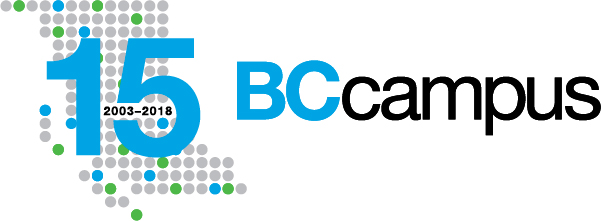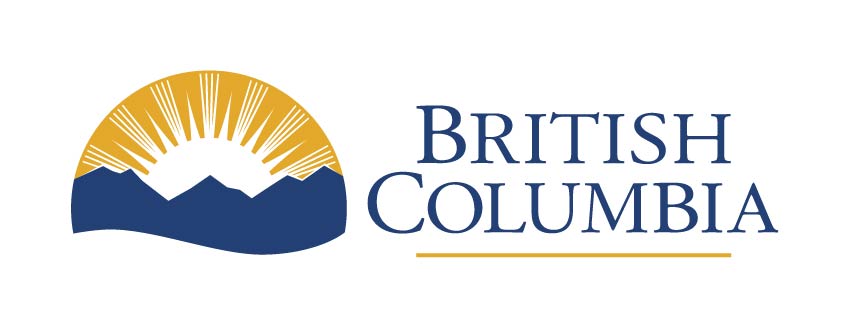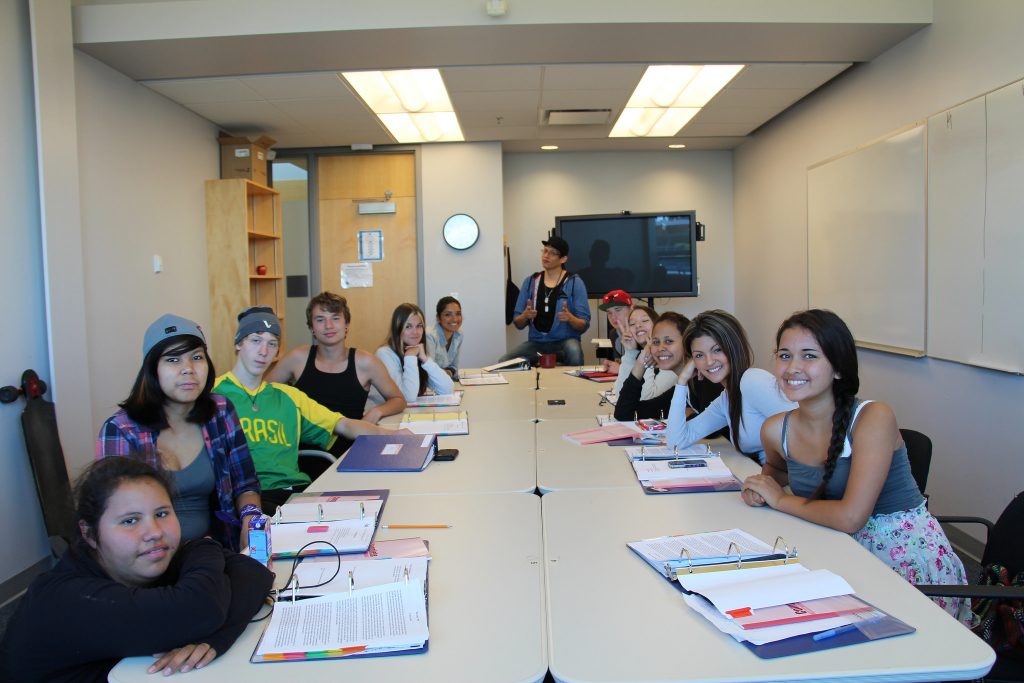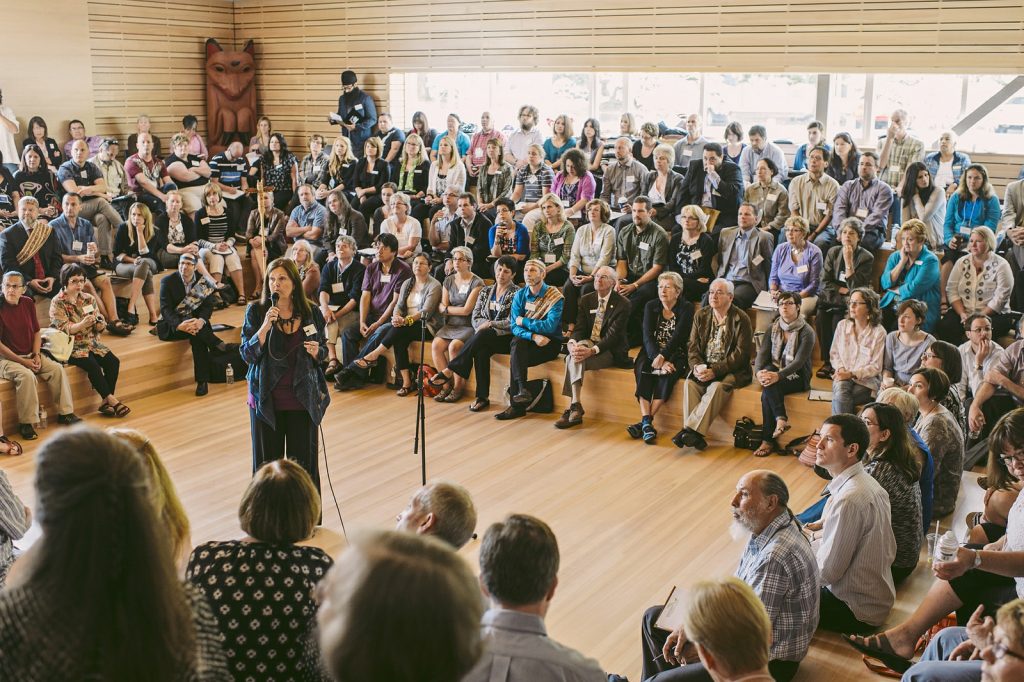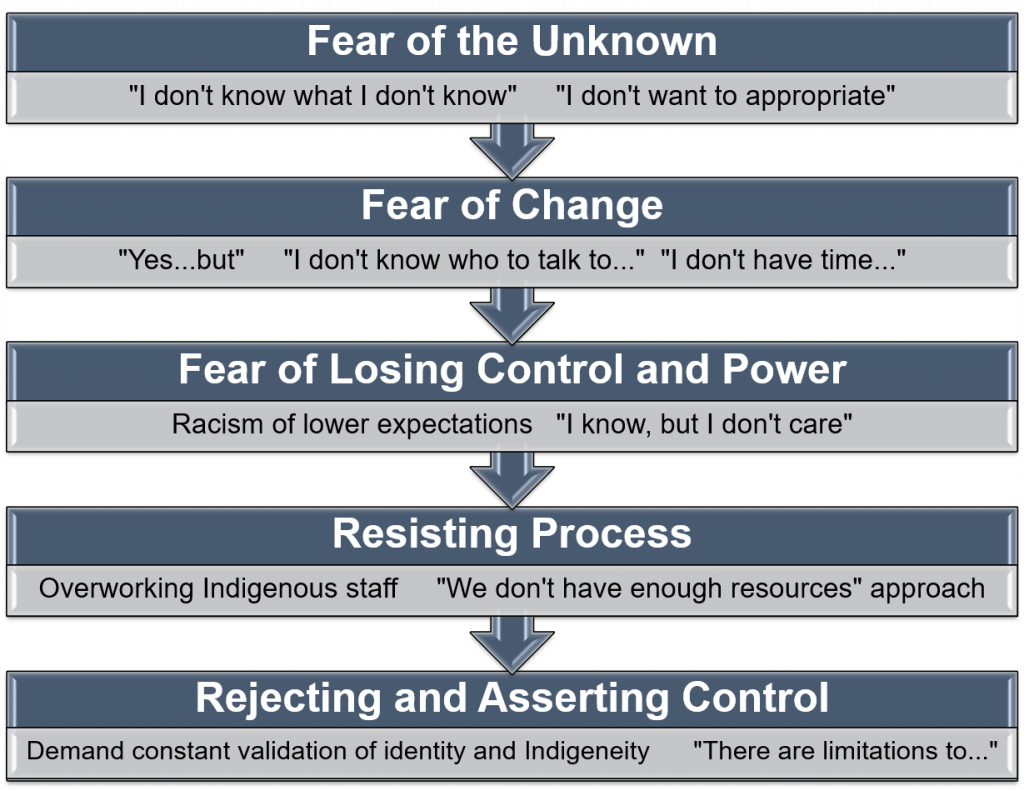Content
Campbell, M., et al. (1992). Strategies for survival. In Gallerie Women Artists’ Monographs, No. 11, Give Back: First Nations perspectives on cultural practice. Vancouver, BC: Gallerie Publications.
Canadian Broadcasting Corporation. (2012). 8th Fire: Aboriginal Peoples, Canada and the way forward (TV series and interactive website with teaching resources; videos available to Curio.ca subscribers only, or for purchase on iTunes). https://curio.ca/en/collection/8th-fire-1615/
Dashuk, J. (2014). Clearing the plains: Disease, politics of starvation, and the loss of Aboriginal life. Regina, SK: University of Regina Press.
Fletcher, W. (2011). A dialogue on the history and legacy of the Indian Residential Schools (video). http://indigenousfoundations.web.arts.ubc.ca/ubc_dialogue_nov_1_2011/
King, T. (2003). The truth about stories: A Native narrative. Toronto, ON: House of Anasi Press. Podcast available at CBC – Massey Lectures: http://www.cbc.ca/radio/ideas/the-2003-cbc-massey-lectures-the-truth-about-stories-a-native-narrative-1.2946870
King, T. (2012). The inconvenient Indian: A curious account of Native people in North America. Toronto, ON: Anchor Canada.
McFarlane, P., & Schabus, N. (eds.). (2017). Whose land is it anyway? A manuel for decolonization. Vancouver, BC: Federation of Post-Secondary Educators of BC.
Miller, B. G. (ed). (2008). Be of good mind. Essays on the Coast Salish. Vancouver, BC: UBC Press.
St. John, M. (director). (2016). Colonization Road (video). In Firsthand. Toronto, ON: Canadian Broadcasting Corporation. http://www.cbc.ca/firsthand/episodes/colonization-road
Thomas, R., & Green, J. (2007). A way of life: Indigenous perspectives on anti-oppressive living [PDF]. First Peoples Child and Family Review 3(1), 91–104. Retrieved from https://fncaringsociety.com/sites/default/files/online-journal/vol3num1/Thomas_Green_pp91.pdf
Context
Absolon, K. E. (2011). Kaandossiwin: How we come to know. Winnipeg, MB: Fernwood Publishing.
Armstrong, J., & Cardinal, D. (1991). The native creative process: A collaborative discourse. Penticton, BC: Theytus Books.
Battiste, M., & Henderson, J. Y. (2000). Protecting Indigenous knowledge and heritage: A global challenge. Saskatoon, SK: Purich Press.
Blackstock, C. (2011). The emergence of the breath of life theory [PDF]. Journal of Social Work Values and Ethics, 8(1). Retrieved from http://jswve.org/download/2011-1/spr11-blackstock-Emergence-breath-of-life-theory.pdf
Cajete, G. (1993). Look to the mountain: An ecology of Indigenous education. Durango, CO: Kivaki Press.
Fixico, D. (2003). The American Indian mind in a linear world: American Indian studies and traditional knowledge. New York, NY: Routledge.
Ghostkeeper, E. (2007). Spirit giving: The concept of spiritual exchange. Duncan, BC: Writing on Stone Press.
Hansen, J. G., & Antsanen, R. (2016). Elders’ teachings about resilience and its implications for education in Dene and Cree communities. International Indigenous Policy Journal, 7(1). Retrieved from https://ir.lib.uwo.ca/iipj/vol7/iss1/2/
Hart, M. A. (2002). Seeking Mino-Pimatisiwin: An Aboriginal approach to helping. Halifax, NS: Fernwood Publishing.
Maddison, S. (2013). Indigenous identity, “authenticity” and the structural violence of settler colonialism. Identities: Global studies in culture and power, 20(1), 288–303. https://doi.org/10.1080/1070289X.2013.806267
Regan, P. (2011). Unsettling the settler within: Indian residential schools, truth telling, and reconciliation in Canada. Vancouver, BC: UBC Press.
Restoule, J. P., & Chaw-win-is. (October 2017). Old ways are the new way forward: How Indigenous pedagogy can benefit everyone (Reflection paper prepared for the Canadian Commission for UNESCO). Download from http://en.ccunesco.ca/our-themes/encouraging-innovation/idealab
Sensoy, Ő., & DiAngelo, R. (2012). Is everyone really equal? An introduction to key concepts in social justice education. New York, NY: Teachers College Press.
Smith, L. T. (2012). Decolonizing methodologies: Research and Indigenous Peoples (2nd ed.). New York, NY: Zed Books.
Stonechild, B. (2006). The new buffalo: The struggle for Aboriginal post-secondary education in Canada. Winnipeg, MB: University Press.
Wilson, S. (2008). Research is ceremony: Indigenous research methods. Winnipeg, MB: Fernwood Publishing.
Application
Brokenleg, M., et al. (1990). Reclaiming youth at risk: Our hope for the future. Bloomington, IN: National Educational Service.
Centre for Teaching, Learning and Technology, University of British Columbia. (2016). Time and place at UBC: Our histories and relations. http://timeandplace.ubc.ca/user-guide/introduction/
Canadian Broadcasting Corporation. Beyond 94: Truth and reconciliation in Canada.
https://newsinteractives.cbc.ca/longform-single/beyond-94?&cta=1
Doran, A. (April 2017). How to be an ally to Indigenous People (Blog post, Indigenous Perspectives Society). http://ipsociety.ca/2017/04/
First Nations and Indigenous Studies, University of British Columbia. (2007). What I learned in class today: Aboriginal issues in the classroom (Research project with student videos). https://intheclass.arts.ubc.ca/
Fraser, C., & Komarnisky, S. (August 4, 2017). 150 acts of reconciliation for the last 150 days of Canada’s 150.
http://activehistory.ca/2017/08/150-acts-of-reconciliation-for-the-last-150-days-of-canadas-150/
Gehl, L. (n.d.). Ally bill of responsibilities. https://www.lynngehl.com/ally-bill-of-responsibilities.html
Joseph, R. (Chief Dr.). (2016). Healing a nation through truth and reconciliation. TEDXEastVan. https://youtu.be/rJQgpuLq1LI
KAIROS Canada. (1997). The KAIROS Blanket Exercise. https://www.kairosblanketexercise.org/
Kuokkanen, R. (2007). Reshaping the university: Responsibility, Indigenous epistemes, and the logic of the gift. Vancouver, BC: UBC Press.
Pete, S. (2016). 100 ways: Indigenizing and decolonizing academic programs [PDF]. Aboriginal Policy Studies, 6(1) 81–89. https://journals.library.ualberta.ca/aps/index.php/aps/article/view/27455/pdf
Younging, G. (2018). Elements of Indigenous style: A guide for writing by and about Indigenous Peoples. Edmonton, AB: Brush Education.
